#new kingdom
Text

Amenhotep I or Ramesses II wearing the Khepresh
This striding statuette of a New Kingdom king, depicts the king in a kilt (shendyt) adorned with an elaborate belt, a usekh collar around his neck, and most notably, the "Blue Crown of War", known to the Egyptians as the "Khepresh" upon his head, which is given a realistic glisten by the addition of rounded blue faïence.
The statue is often associated with Amenhotep I, but others, including the Louvre, where this statue now resides, label this piece as Ramesses II. This may be confusing, but it was not uncommon for kings to reuse or usurp relics from past monarchs, in fact Ramesses II is very well known among scholars for his usurping of past monuments and statues, especially those made during the reign of king Amenhotep III.
However, a further reason for this confusion when it comes to identifying this piece may or almost certainly comes from the deification of Amenhotep I within the Deir el-Medina region, where this piece was found.
Both Amenhotep I and his mother Ahmose-Nefertari became deified after their deaths. Ahmose-Nefertari outlived her son by approximately a year at the least, and became worshipped alongside her son for centuries after. Therefore, depictions of both Amenhotep I and his mother Ahmose-Nefertari are found in tombs and among other types of relics and funerary items dating from much later from their life-times. Thus, explaining statues and other depictions of either of the two dating from later king's reigns.
Read more
98 notes
·
View notes
Text
A satirical papyrus showing a lady mouse being served wine by a cat while another cat dresses her hair, a third cares for her baby, and a fourth fans her. The mice have hilarious huge, round ears.
Where: Egyptian Museum Cairo
When: New Kingdom
6K notes
·
View notes
Text
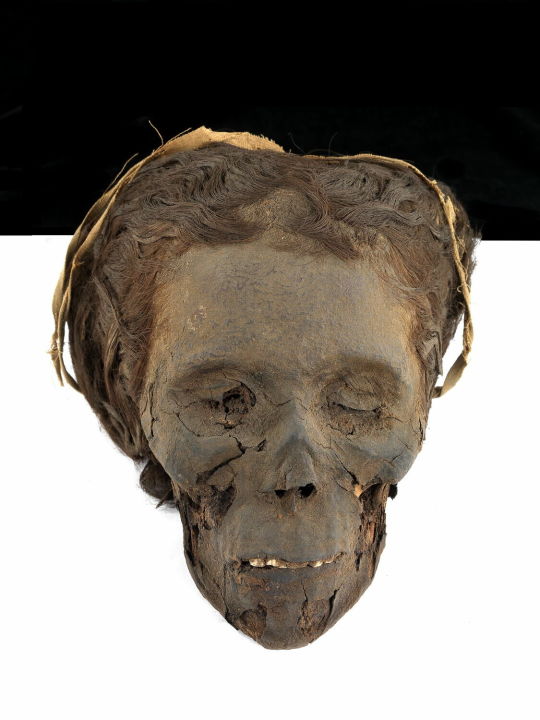



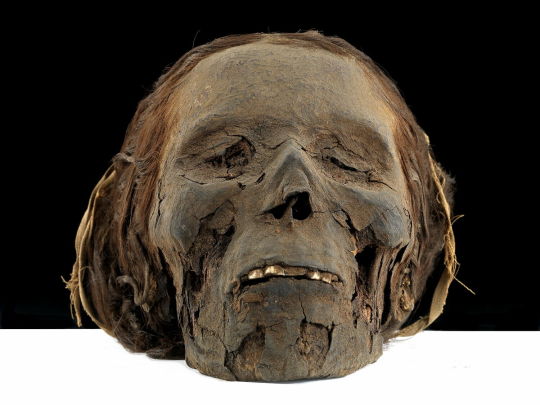
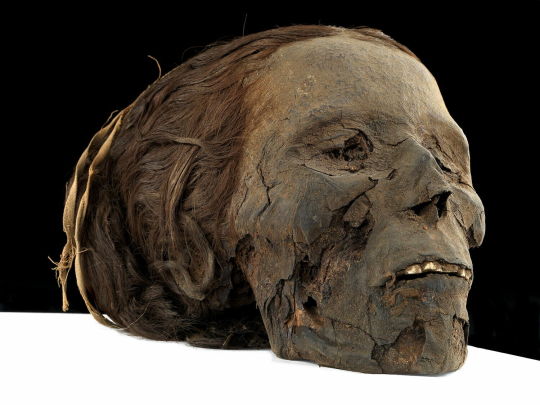
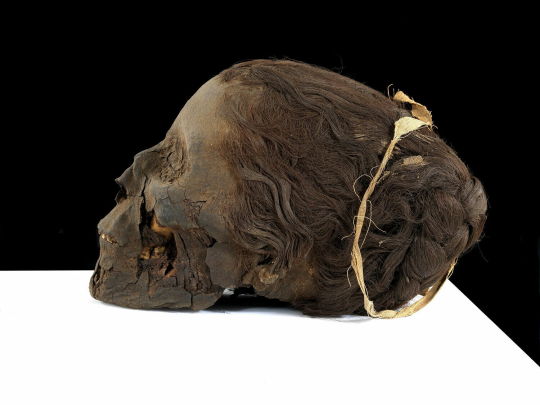
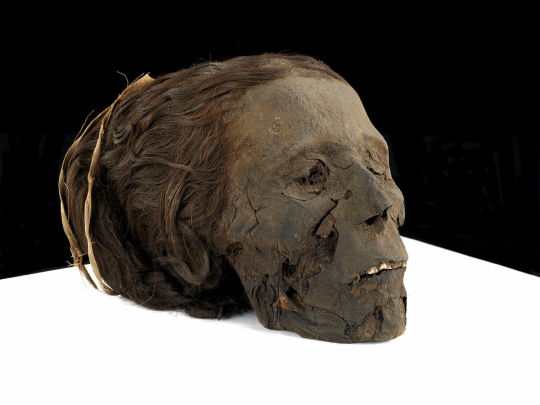
~ Woman Mummy.
Date: 1550-332 B.C.
Period: New Kingdom, Late Period
Medium: Organic; Secondary Medium: Resin, linen (?)
#ancient#ancient art#history#museum#archeology#ancient egypt#ancient history#archaeology#mummy#woman mummy#late period#1550 b.c.#332 b.c.#new kingdom#hair
1K notes
·
View notes
Text
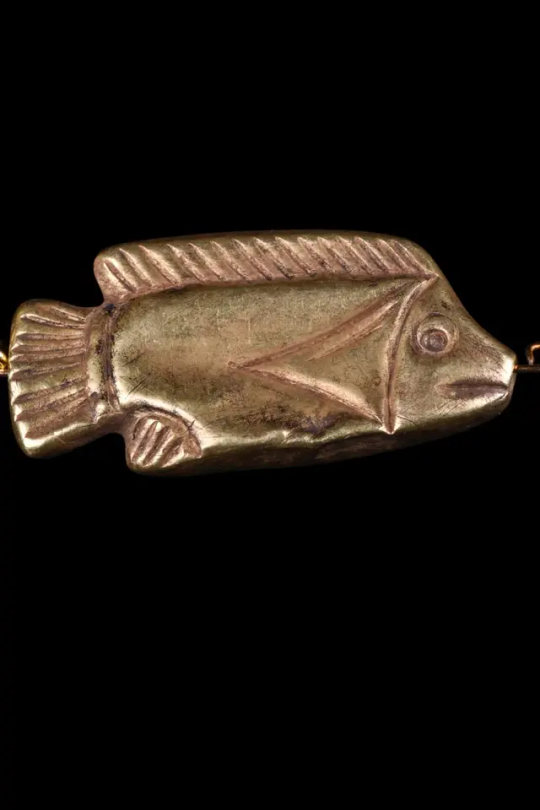

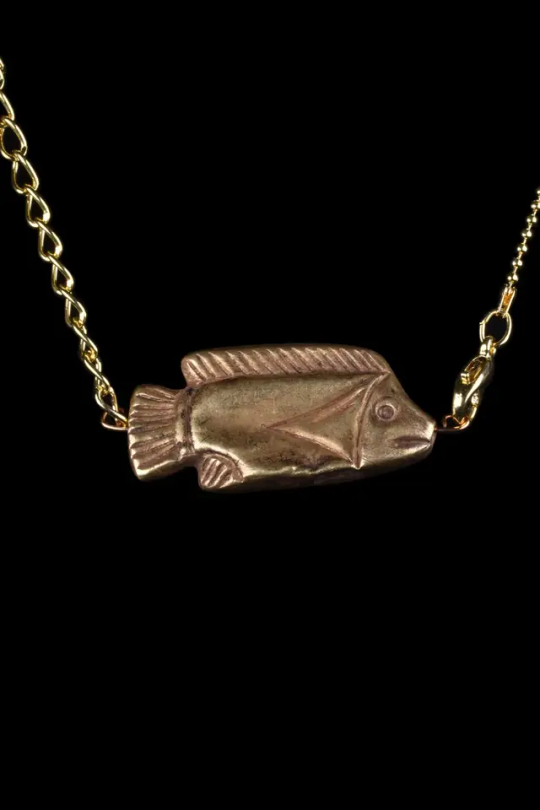
EGYPTIAN GOLD TILAPIA FISH PENDANT
New Kingdom, ca. 1550-1069 BC.
A golden amulet in the shape of a tilapia fish. A cast gold amuletic bead with a suspension hole through the centre. The fish has been crafted with careful attention to detail, boasting a tiny front fin, and with all fins intricately incised to depict their texture. Further diligence has been devoted to the face of the fish, and both sides are decorated in the same manner.
#EGYPTIAN GOLD TILAPIA FISH PENDANT#New Kingdom#ca. 1550-1069 BC#gold#gold jewelry#ancient jewelry#ancient artifacts#archeology#archeolgst#history#history news#ancient history#ancient culture#ancient civilizations#ancient egypt#egyptian history#egyptian art
526 notes
·
View notes
Text
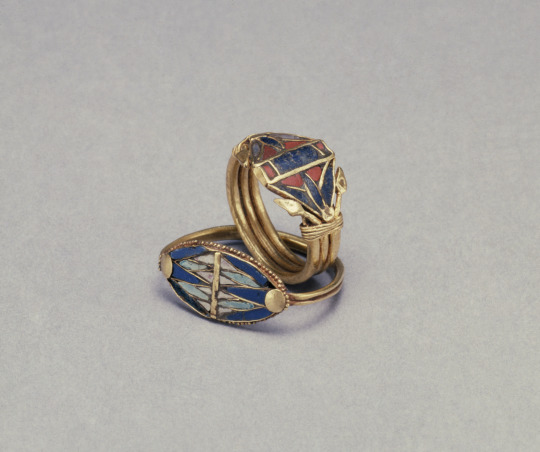
Two Rings with Lotus Flowers
Egyptian, 1400-1200 BCE (New Kingdom)
187 notes
·
View notes
Text
oh hello! i made a little uquiz assigning you a historical period (and maybe i call you gay)
#uquiz#tagamemnon#history#quiz#inca#napoleonic wars#ancient greece#classical greece#rome#roman empire#minoan#regency#ottoman#medieval#well medieval monastary era#idc about the rest of the medieval period SORRY#italian renaissance#new kingdom#egypt#edo japan#i had fun with this#and i was rude as always#its fun to call people gay#and unoriginal#classics
5K notes
·
View notes
Text
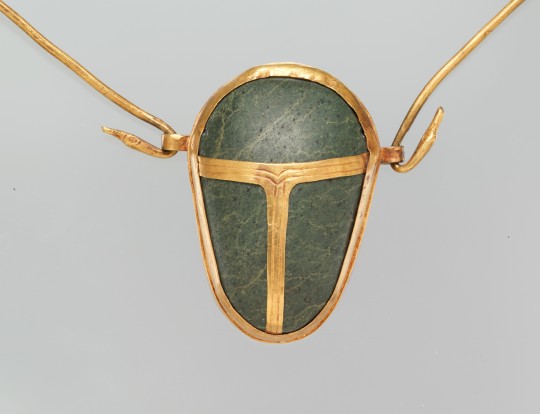
Ancient Egyptian heart amulet (gold and green schist) of one Manhata. Artist unknown; ca. 1479-1425 BCE (reign of Thutmose III, 18th Dynasty, New Kingdom). From the Tomb of the Three Foreign Wives of Thutmose III at Wadi Gabbanat el-Qurud, Thebes; now in the Metropolitan Museum of Art.
#art#art history#ancient art#Egypt#Ancient Egypt#Egyptian art#Ancient Egyptian art#Egyptian religion#Ancient Egyptian religion#kemetic#Thutmose III#18th Dynasty#New Kingdom#jewelry#jewellery#pendant#amulet#metalwork#gold#goldwork#schist#Egyptian Thebes#Metropolitan Museum of Art
684 notes
·
View notes
Photo
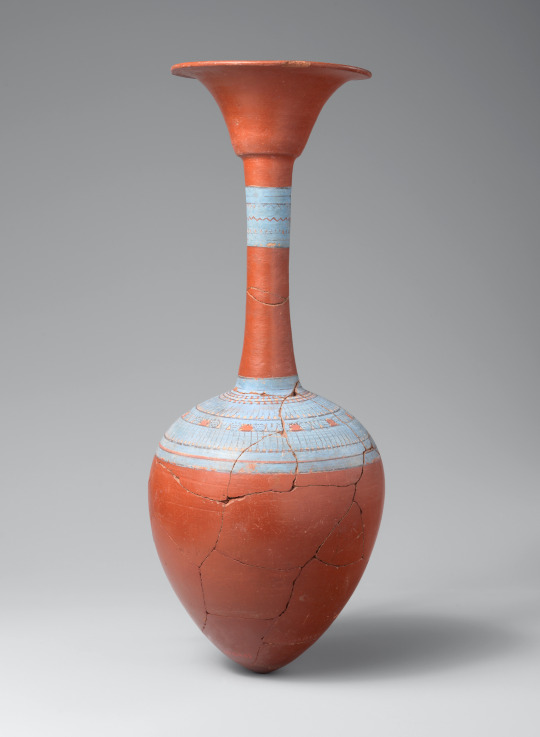
Water Bottle from Tutankhamun's Embalming Cache. New Kingdom, ca. 1336–1327 B.C.
(via Metropolitan Museum of Art)
256 notes
·
View notes
Text
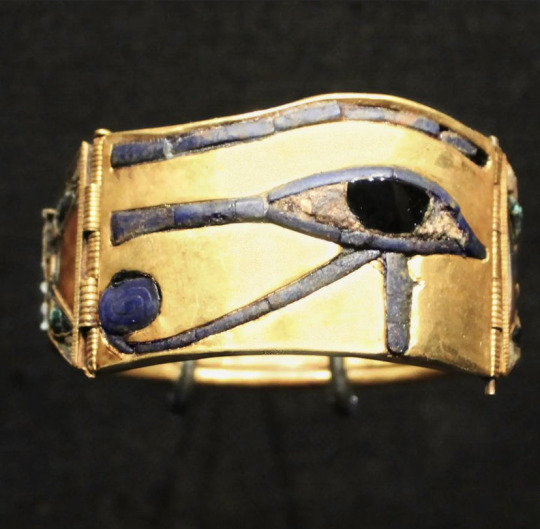
Bangle of Tutankhamen
Gold and jewels inlay Udjat Eye
18th Dynasty, New Kingdom
#art#archaeology#ancient#egyptian art#egyptology#ancient egypt#ancient jewelry#gold jewelry#jewelry#gold#jewels#tutankhamen#tutankhamun#tutankamon#new kingdom
222 notes
·
View notes
Text



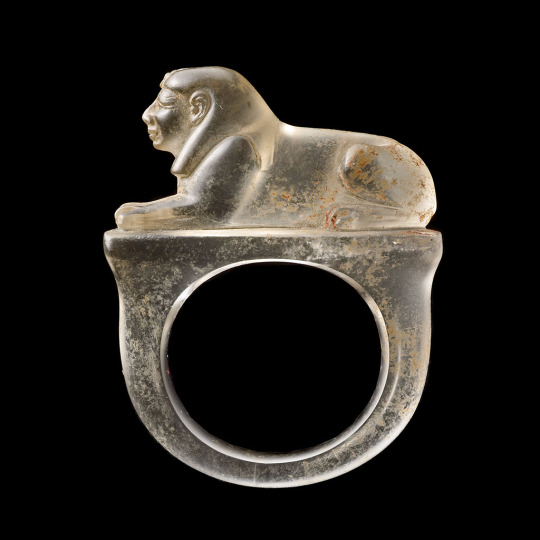
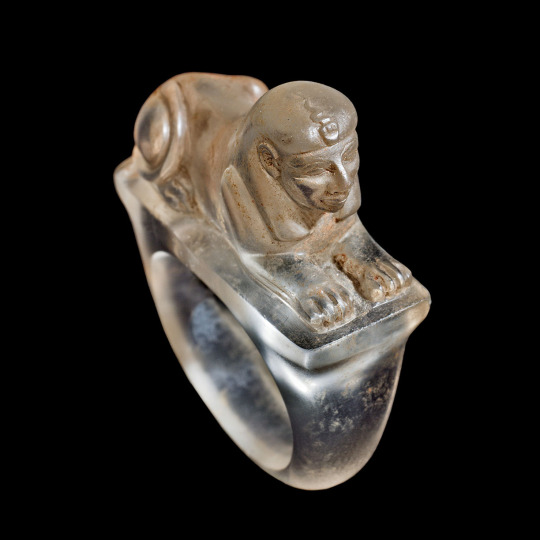
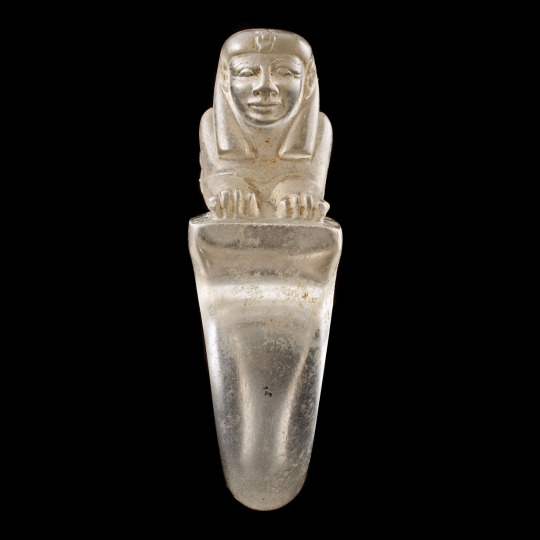
Egyptian Rock Crystal Ring with a Sphinx,
Egyptian · New Kingdom, Ramesside period, IX - XX Dynasty , 1295 - 1069 BC.
The design and execution of the sphinx is masterful. It rests with its tail characteristically following the contour of its right, hind leg, around which it rests.
Like most Egyptian sphinxes, the head of this example is covered by a nemes-headdress, here plain, to the front of which has been affixed a uraeus, or sacred cobra, its tail undulating over its top.
Attention has been paid to the detailed rendering of the toes on the extended front paws. The round face of the sphinx is dominated by large, almond-shaped eyes, set into fairly deep sockets with its eyebrows rendered by incision. The nose exhibits wide wings, its nostrils drilled and prominent. A faint philtrum, or depression, under the center of the nose separates it from the wide, horizontally aligned mouth with its fleshy lips.
The resulting physiognomy gives one the impression of strength and power, devoid as it is of the bland, idealizing features which often characterize the faces of such composite beasts.
That impression contributes significantly to the monumentality inherent in this miniature, jewel-like masterpiece.
Whereas it is difficult to compare the face on our sphinx, despite its inherent monumentality, to much larger examples in stone in order to suggest the identity of the pharaoh represented, its round face and non-idealizing features with their pronounced cheek bones resonate with physiognomic features encountered in some representations of Rameses II.
Rock crystal, perhaps termed menu hedej, in the hieroglyphs was a stone much coveted for amulets and miniature, deluxe vases but its use, because of its rarity, was very restricted.
Rock Crystal, L: 3.2 cm x H: 4.1 cm
Courtesy: Phoenix Ancient Art
#art#history#design#style#archeology#sculpture#antiquity#egypt#sphinx#new kingdom#ring#jewellery#jewelry#rock crystal#XX dynasty#miniature
99 notes
·
View notes
Text

The Hunter's Daughter (c. 1422–1411 BC)
via the Ancient Egyptian collection
Tomb of Menna (1422–1390 BC)
wall and panel painting
#ancient egyptian art#ancient egypt#new kingdom#new kingtom style#tomb of menna#tomb of menna seris#**a#**
186 notes
·
View notes
Text
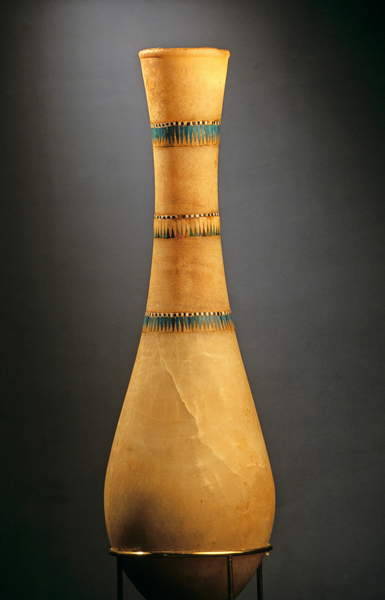
Tutankhamun Tall Vase Inlaid with Faience
A brownish residue from a perfumed oil was found inside this Egyptian alabaster tall vase from the Tomb of Tutankhamun. Oils, essential for rituals, were highly valued. The Tomb of Tutankhamun contained various artifacts, including perfumed oil vases.
This vase was discovered during the excavation of his tomb in the Valley of the Kings in Egypt. It is believed that the vase was used to hold perfumed oils or other aromatic substances, which were commonly used in ancient Egyptian rituals and for personal grooming.
New Kingdom, late 18th Dynasty, ca. 1332-1323 BC.
Tomb of Tutankhamun (KV62), Valley of the Kings, Thebes.
To be in the Grand Egyptian Museum. GEM. 70
Read more
32 notes
·
View notes
Text

Ankhesenamun
#ankhesenamun#new kingdom#Egypt#Egyptian#ancient Egypt#ancient Egyptian#Luxor#Waset#Thebes#luxor temple#egyptian temple#Kemet#Kemetic#Kemeticism
68 notes
·
View notes
Text

~ Bundle of Hair Extensions.
Date: ca. 2114-1502 B.C.
Period: Old Kingdom-early New Kingdom; 16th-18th Dynasty
Medium: Human hair, linen
▪︎ From the source: These hair extensions would have been placed in a tomb for use in the afterlife. In this world, Egyptians used extensions to make their wigs or natural hair thicker and more attractive, just as people do today. The reliefs in this case show hairdressers adding extensions like these to the hair or wig of Queen Neferu.
#ancient#ancient art#history#museum#archeology#ancient egypt#ancient history#archaeology#egyptian#egyptology#egypt#bundle of hair extensions#extensions#fake hair#queen tiye#old kingdom#new kingdom#16th Dynasty#18th dynasty#human hair#ca. 2114 b.c.#ca. 1502 b.c.
2K notes
·
View notes
Text
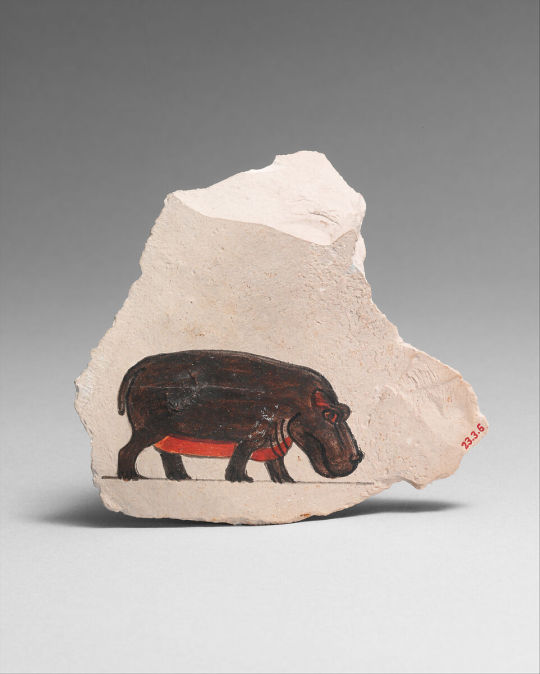
Artist's Painting of a Hippopotamus
Ca. 1479–1425 B.C.
New Kingdom.
The hippopotamus on this ostracon was painted with the sure hand of a skilled artist who had no need of a grid. Other ostraca in the collection were clearly made as templates to be used when transferring an image to the wall of a tomb or a temple or as practice pieces. The purpose for this sketch and others is less clear.
#Artist's Painting of a Hippopotamus#Ca. 1479–1425 B.C.#new kingdom#art#atist#art work#art world#art news#ancient art#archeology#archeolgst#history#history news#ancient history#ancient culture#ancient civilizations#ancient egypt#egyptian history#egyptian mythology#egyptian art
172 notes
·
View notes
Text

Lionness Headed Usekh, So Called "Aegis"
Egyptian, 1290-664 BCE (Late New Kingdom-Third Intermediate Period)
Silver was not easily obtainable in Egypt and was probably more costly for ancient Egyptians to acquire than gold.
#artifact#Egypt#new kingdom#third intermediate period#Aegis#lioness headed Usekh#pendant#embossed silver
149 notes
·
View notes
